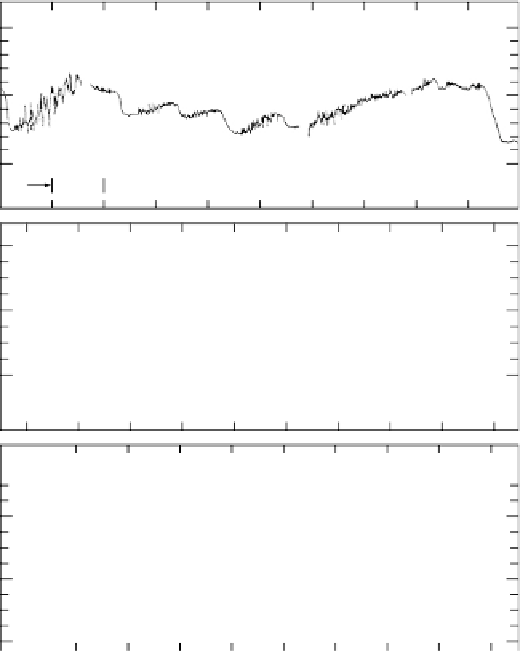Geoscience Reference
In-Depth Information
4.0
28 February 1982
Orbit 2112
2059:40 UT
3.5
ALT
483 km
MLT 5 23.1
INV. LAT. 64
5
3.0
1s
2.4
1126:25 UT
30 October 1981
Orbit 513
2.0
ALT
525 km
MLT 5 18
INV. LAT. 76
5
1.6
24 March 1982
Orbit 2427
1817:30 UT
2.4
2.0
ALT 5 510 km
MLT 5 20.8
INV. LAT. 65.5
1.6
Figure 10.13
Examples of the preferential structuring of high-latitude plasma density
enhancements on gradients of a particular sign. [Adapted from Cerisier et al. (1985).
Reproduced with permission of the American Geophysical Union.]
the flight path of the
AUREOL-3
satellite (Cerisier et al., 1985). Notice that the
structure seems to occur preferentially on only one sense of the gradients. In
Fig. 10.14 we have turned one of the vertical equatorial spread F-rocket profiles
on its side for comparison with the horizontal satellite data in Fig. 10.13. The
similarity is striking in that both profiles show a strong tendency for irregularity
development on a preferred direction of the density gradient. The equatorial case
is more violent with many irregularities pushing through to the stable side of the
gradient.
Gravity plays very little role in high-latitude phenomena, since
g
is essentially
parallel to
B
. We therefore concentrate our analysis on the electric field-driven
aspects of the instability in this chapter. We refer to the process as a general-
ized
E
×
B
instability and include neutral winds, electric fields, and field-aligned





Search WWH ::

Custom Search